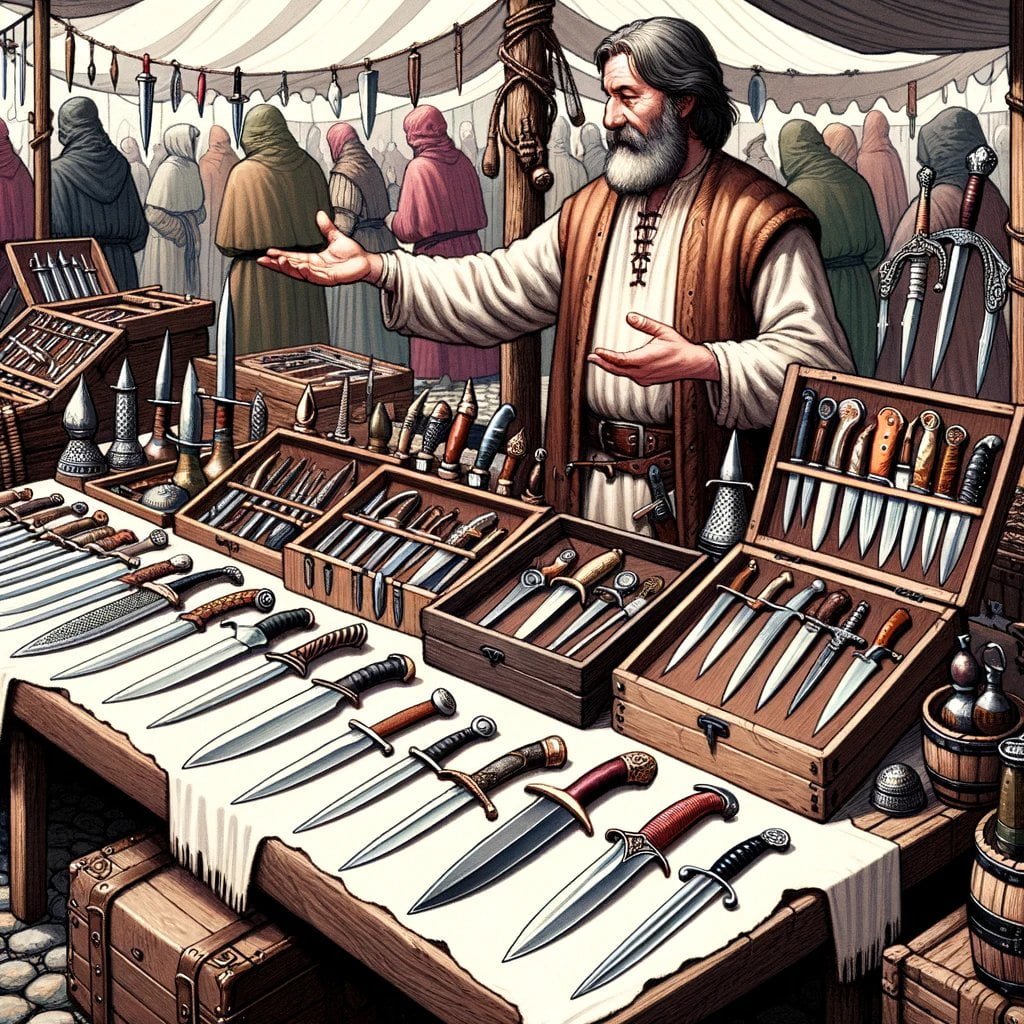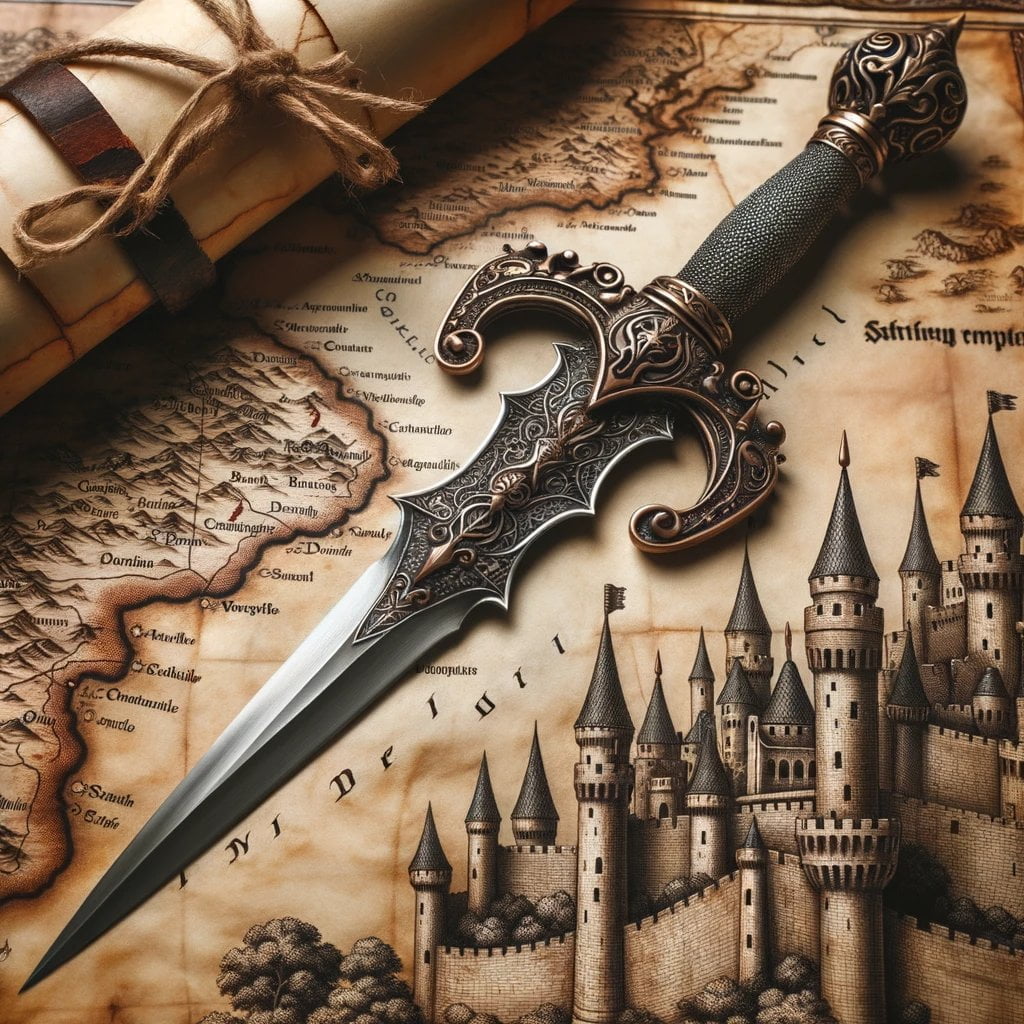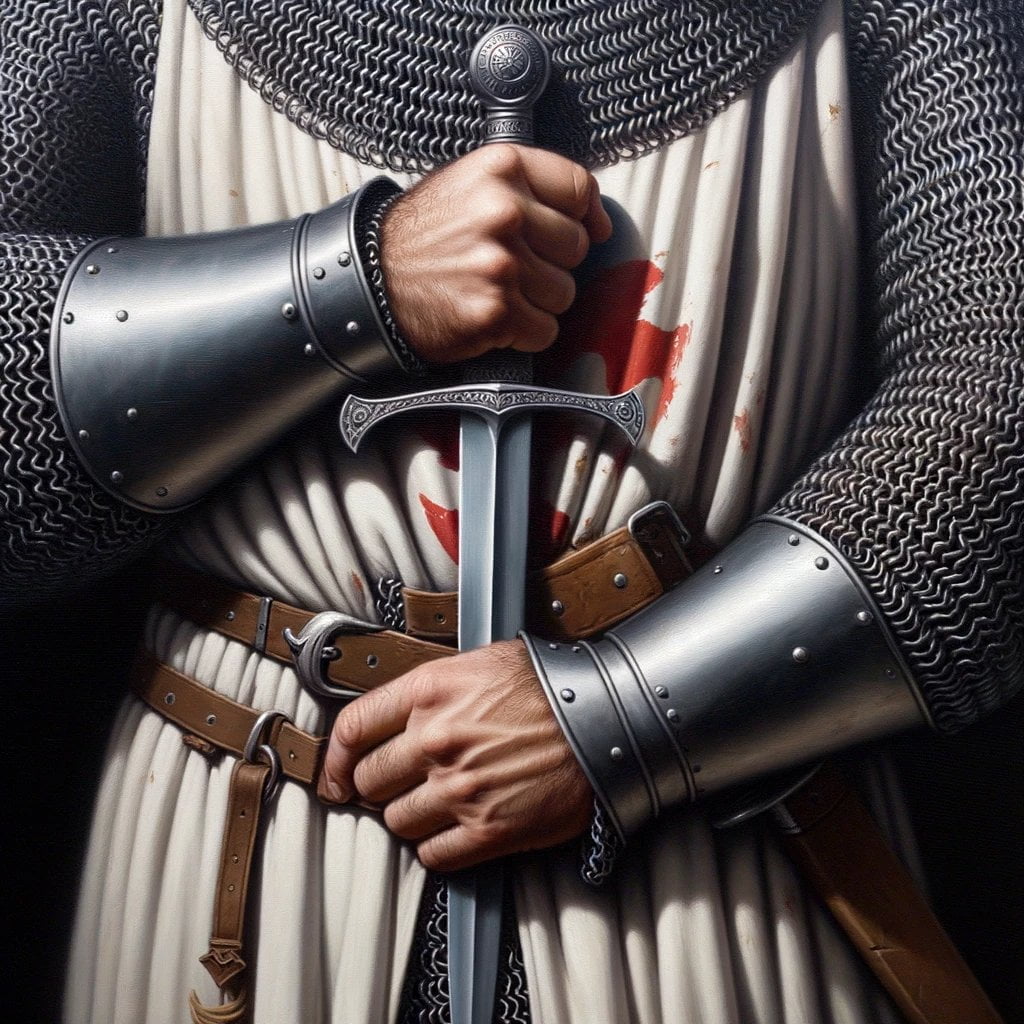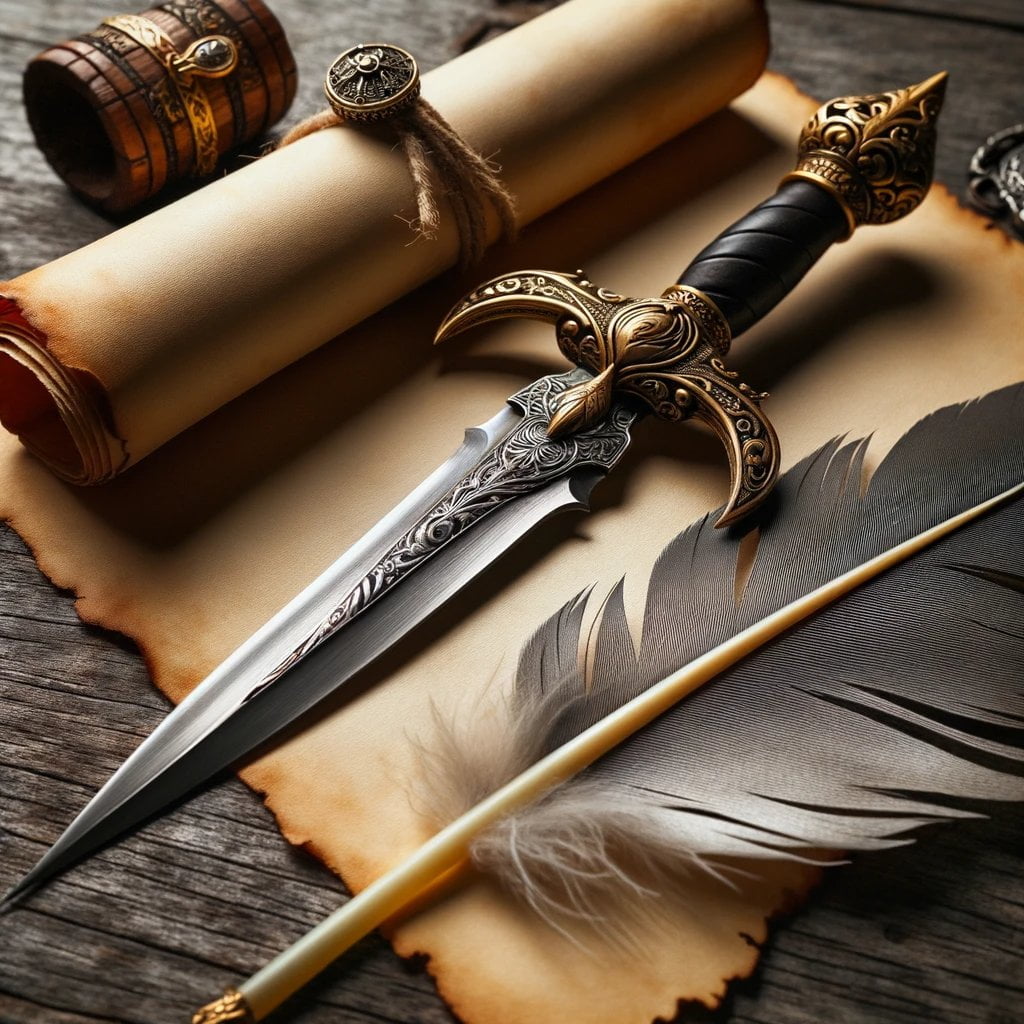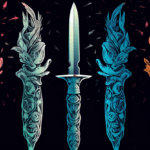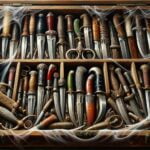Return to the mysterious Middle Ages, when swords clashed and armor pierced. The medieval dagger was a versatile and important weapon in this fascinating age. We explore these blades’ complex production, design, and use to understand their place in medieval society. In our essay, The Multifaceted Role of Medieval Daggers: Unveiling Their Function and Significance, we discuss their use in self-defense, close-quarters combat, ceremonial ceremonies, and status.
What was a dagger used for in medieval times?
The medieval world relied on daggers as tools and weapons. Knights and commoners used these blades for many purposes beyond their utilitarian use. Let’s examine medieval daggers’ many uses and meanings.
Medieval Daggers: Tools of War and Everyday Life
Medieval daggers had double-edged blades that tapered to sharp tips to puncture shields and armor in close combat. Knights revered these weapons for their deadly combat effectiveness. Daggers were carried as backup weapons to swords or polearms for self-defense.
But daggers were not just for combat. These blades become essential for regular operations. Daggers were used for cooking, chopping meat, and wood. Crafting arrows and other essentials was possible with them.
Types of Medieval Daggers
Medieval daggers were very varied in shape and style. The anelace’s long, straight blade was useful for thrusting. The baselard’s triangular blade was strong enough to pierce armor. Those wanting a lightweight, deadly weapon preferred the poignard’s needle-like form. The cinquedea, a “five-finger” dagger with a broad blade, resembled a small sword.
Symbolism and prestige
Medieval daggers were symbolic as well as functional. Wearing a dagger as a fashion accessory showed money and dignity. Elegant hilt designs, embellishments, and inscriptions made these swords desirable to the privileged.
The Art of Dagger Making
Hand forging was the main method of medieval dagger-making. The blades were carefully fashioned by skilled blacksmiths by heating and striking carbon steel on anvils. The daggers were strong and durable, making them combat equipment.
Regular sharpening kept daggers sharp. Blacksmiths used whetstones and other methods. This kept the blades in top shape for use.
Exploring Further
Several resources might help you learn more about medieval daggers. Darksword-armory.com, buyingasword.com, todcutler.com, medievalbritain.com, and workingtheflame.com provide historical context, extensive explanations, and medieval dagger replicas.
In conclusion, medieval daggers were more than weapons. They shaped the time’s history and culture. These blades symbolized power and status in combat and daily life. These intriguing antiques represent the Middle Ages’ rich legacy due to their craftsmanship and unique designs.
Medieval daggers have fascinated historians and enthusiasts for centuries. These deadly weapons were not only used in battles but also carried by nobles as a symbol of their status and power. If you’re curious to learn more about the intriguing history and features of medieval daggers, click here for a fascinating collection of medieval dagger facts. Explore the unique designs, craftsmanship, and even the legends surrounding these iconic weapons. Uncover the secrets behind these blades and transport yourself to an era of chivalry, honor, and the clash of steel. So, are you ready to delve into the world of medieval daggers?
Ceremonial and symbolic purposes
Daggers have shaped Middle Age culture and history in many ways. Due to their ceremonial and symbolic use, they were more than useful. Explore medieval daggers’ fascinating culture and how they were treasured and cherished.
The Intricate Design of Daggers
Medieval daggers were intricately designed and detailed, reflecting the artistic tastes of the time. The dagger’s hilt has finger guards and pommels for grip and aesthetics. These elements were made of expensive metals, ivory, or finely carved wood, adding to their ceremonial worth.
Presentations and ceremonial rituals
In Middle Age performances and rites, daggers were important. Knights, lords, and other respected individuals were often given daggers as gifts of honor, devotion, or companionship. Custom engravings, family crests, and elaborate patterns made these blades unique and valued.
Knights’ regalia included daggers, emblems of authority and power, for formal events. Their ornate appearance and historical significance made such ceremonies solemn and grand.
The Symbolism of Daggers
In medieval society, daggers symbolized many things. Some societies and military groups revered them for their war bravery. These blades symbolized warrior spirit and the ability to fight close-quarters.
Due to their secrecy and surprise strike, daggers may also be connected with duplicity or treachery. Daggers were both symbols of honor and warnings of hidden dangers.
Beyond Battle: Daggers in Everyday Life
Daggers were used in battle and warfare, but also elsewhere. These multipurpose weapons were crucial in medieval life. Miniature and maneuverable, they were suitable for close battle or backup weapons when swords were difficult.
Hunting with daggers allowed people to sneak up on prey or defend themselves from animals. These blades were also used to chop food and leather.
Legacy of Medieval Daggers
Medieval daggers shaped history and popular culture. These amazing weapons, from Tutankhamun’s golden-bladed treasures to knights and monarchs’ daggers, continue to fascinate.
Daggers are still used in literature, cinema, and art as symbols. Daggers symbolize stealth, danger, and hidden power. It is important to understand that historical contexts and cultural perceptions of these powerful tools affect such depictions.
In conclusion, medieval daggers had other uses outside of fighting. Their ceremonial and symbolic uses gave them more meaning in medieval civilization. These blades, whether presents, symbols of authority, or ordinary instruments, enchant us with their rich history and diverse purpose. Next time you see a dagger, consider its impressive history.
Influence of Daggers on Medieval Culture and Society
Daggers shaped medieval culture and society in many ways. These weapons were used for self-defense, close-quarters warfare, prestige, authority, and tradition.
The Dagger’s Deadly Efficiency
Daggers were formidable combat weapons. While swords were heavy and required great skill, daggers were light and agile. They were stab weapons that could pierce medieval armor and kill. In close-quarters warfare or groundfights, a dagger stroke can kill an enemy.
The invention of iron and steel dramatically influenced daggers. These advances made blades sharper and more durable, improving combat effectiveness. Although materials varied by time and place, early daggers were often constructed of wood or bone.
Ceremonial and symbolic significance
Daggers were ceremonial and symbolic in medieval civilization. They were often presents or ritual decorations. Knights and lords received daggers during knighting ceremonies to honor their valor, chivalry, and exclusive status. These daggers’ complex patterns and rich features reflected the time’s artistic tastes and the wielders’ wealth and prestige.
Blades were widely displayed during formal occasions, demonstrating their owners’ might. The sight of a dagger at such ceremonies reminded attendees of their martial skills. Beyond combat excellence, the dagger symbolized courage, devotion, and honor.
Transition to self-defense weapons
As medieval battles emphasized armor and cavalry, daggers became self-defense tools. When heavier armor was impracticable for daily use, their lightweight and unobtrusive nature made them acceptable for personal defense. People seeking close-quarters or surprise defense used daggers. Their usefulness, even against armed opponents, made them prized.
A lasting legacy
Medieval daggers have a legacy beyond their utility. These weapons live on in popular culture because of their symbolism and significance. They depict medieval knights’ valor, honor, and chivalry, as well as the bloodshed and brutality of the time. Due to their depth and importance, daggers have shaped medieval art, literature, and even modern ceremonies.
Overall, medieval daggers shaped culture and society in many ways. From wartime effectiveness to ceremonial and symbolic value, these weapons shaped medieval society. Daggers symbolized authority, prestige, and dignity, as well as functionality. Understanding how daggers shaped medieval culture and society gives us a fascinating look into this period.
FAQ
Question 1
What was the primary purpose of medieval daggers?
Answer 1
Medieval daggers were used for stabbing and piercing armor in ground combat. They were lighter than other hand weapons and could kill an enemy in one blow.
Question 2
Did medieval daggers have any ceremonial or symbolic purposes?
Answer 2
Medieval daggers were ceremonial and symbolic. They were commonly presented or used in knighting ceremonies.
Question 3
How did the effectiveness of daggers change over time?
Answer 3
As medieval combat focused more on armor and cavalry, the effectiveness of daggers in battle decreased. They transitioned into the category of self-defense weapons.
Question 4
What materials were used to make medieval daggers?
Answer 4
The materials used to produce medieval daggers vary by time and place. Early daggers were constructed of cheap wood or bone. New materials like iron and steel make dagger blades sharper and more durable.
Question 5
How can daggers be associated with both courage and treachery?
Answer 5
Some cultures and military organizations link daggers with combat bravery. Due to their hiding and surprise, they can also symbolize deception or treachery.
- Unveiling the Enigma: Mansoureh Khojasteh Bagherzadeh’s Public Appearances & Private Life in Iran - July 18, 2025
- Unveiling the Mystery: Mansoureh Khojasteh Bagherzadeh’s Husband: A Rare Glimpse into a Private Life - July 18, 2025
- Unveiling Masoud Khamenei’s Mother: Power, Influence, and Iran’s Future - July 18, 2025
